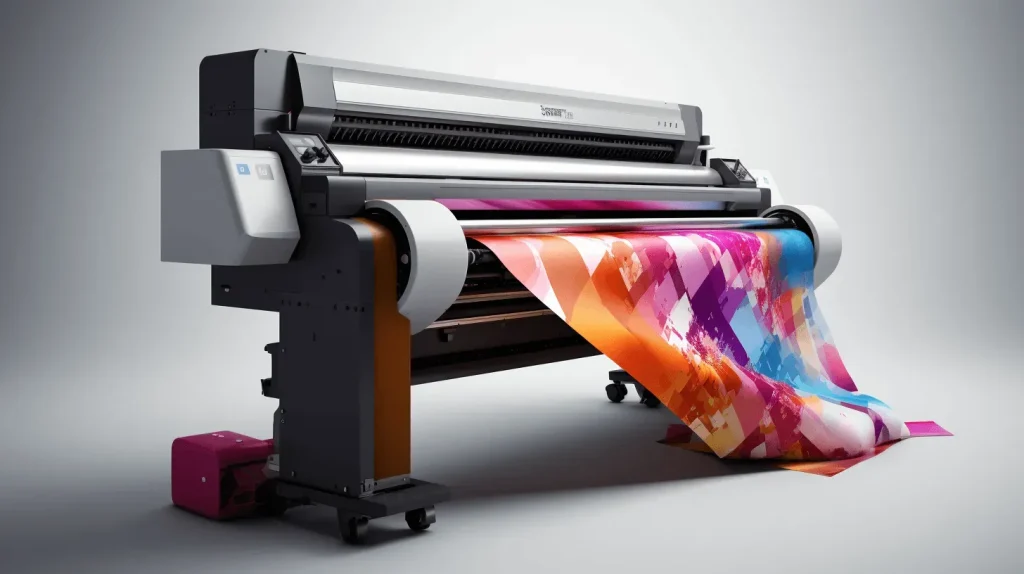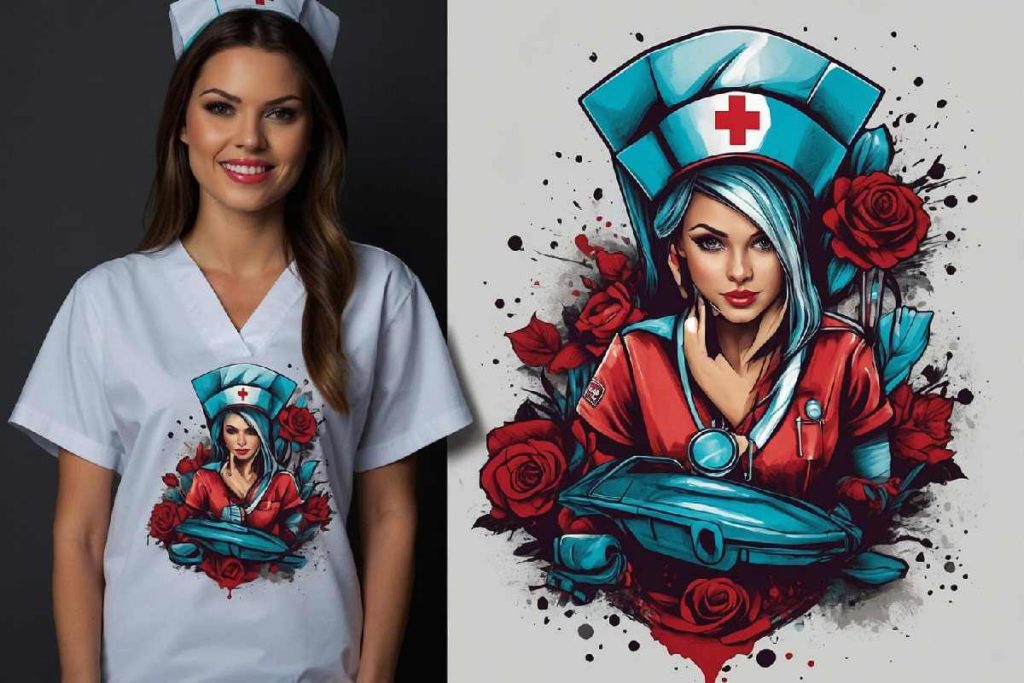DTF printing, or Direct to Film printing, is revolutionizing the custom apparel industry with its ability to produce vibrant and intricately detailed designs. This innovative printing process allows creators to effortlessly transfer colorful images onto various fabric types, making it a game-changer for businesses seeking high-quality merchandise. By utilizing eco-friendly printing technology paired with digital textile printing methods, DTF printing not only results in stunning visuals but also reduces environmental impact compared to traditional methods. The versatility of DTF printing is set to meet the rising demand for unique and personalized apparel, enhancing customer satisfaction. Join us as we explore the step-by-step DTF printing process, providing insight into how to achieve professional results from design to final product.
Often referred to as Direct to Film printing, DTF printing is gaining attention for its superior flexibility in the realm of custom apparel creation. This process involves digitally printing designs onto a special film, which is then transferred onto fabrics, making it an essential tool for those involved in bespoke clothing and merchandise production. As digital textile printing continues to evolve, the adoption of DTF methods, alongside other eco-conscious printing technologies, reflects a shift towards sustainability in the design industry. With the capacity for intricate designs and a commitment to environmental responsibility, DTF printing stands out as a modern solution for creatives and entrepreneurs alike. Delve deeper into this fascinating printing technique, and discover how it can elevate your apparel offerings.
Understanding the Basics of DTF Printing
DTF printing, or Direct to Film printing, is an advanced technique designed to produce high-quality custom apparel and merch. This method differentiates itself by allowing prints to be transferred from a film to fabric, making it an ideal choice for complex designs that require vibrant colors and precision. Unlike traditional printing methods that may involve extensive setup or limited fabric compatibility, DTF printing streamlines the process, enabling businesses and individuals to produce custom items efficiently.
At its core, DTF printing leverages water-based inks, which are not only effective in maintaining color vibrancy but also adhere to a variety of fabrics without the need for pre-treatment. This adaptability to different materials makes DTF not just practical but also eco-friendly, appealing to creators seeking sustainable alternatives in their custom apparel printing endeavors.
The Importance of Design in DTF Printing
Design serves as the heart of any DTF printing project. The process begins with creating a unique and captivating visual that reflects the intended message or aesthetic. Using specialized software, designers can incorporate various elements—colors, typography, and imagery—to craft a standout design. Working in CMYK color mode ensures that colors will meet expectations during the final transfer onto fabric, allowing your creations to truly shine.
Strategically optimizing your design can also play a vital role in the print’s success. For instance, simple designs may translate more easily onto fabric, while intricate graphics might require additional consideration regarding the quality of the film and the precision of the printing process. Understanding the nuances of design for DTF printing will ultimately enhance the final product, resonating with audiences and meeting customer demands in a competitive market.
The DTF Printing Process Explained
The DTF printing process unfolds in several key steps, each contributing to the overall quality of the final product. Beginning with the design creation, this phase sets the foundation for captivating prints. Once finalized, the design is printed onto a specific release film using state-of-the-art DTF printers. Utilizing water-based inks, this step ensures that the printed image remains vibrant and retains its quality when transferred to various fabric types.
Following the print, applying adhesive powder to the wet ink is crucial. This powder, once heated, binds the design to the fabric, ensuring durability and longevity. The effectiveness of the heat transfer, facilitated by a heat press, is central to the DTF printing process. Each stage requires precision, from temperature settings to timing, to achieve outstanding results that meet the expectations of both creators and customers.
Eco-Friendly Benefits of DTF Printing
One of the standout features of DTF printing is its commitment to eco-friendly practices. The use of water-based inks significantly reduces environmental impact compared to solvent-based inks commonly found in other printing methods. This shift towards a more sustainable solution resonates with consumers increasingly seeking eco-conscious products, making DTF printing an attractive option for environmentally motivated businesses.
Moreover, the DTF printing process involves minimal waste, contributing further to its green credentials. As businesses adopt this eco-friendly printing technology, they not only appeal to a growing segment of consumers mindful of their environmental footprint but also set themselves apart in a market that values sustainability. This not only enhances brand image but encourages responsible production methods within the textile printing industry.
Initiating Your DTF Printing Business
Starting a DTF printing business requires careful planning and execution, beginning with understanding the market and your target audience. Assessing trends in custom apparel printing can guide your product offerings, ensuring they resonate with current consumer preferences. With a range of equipment necessary for DTF printing, from high-quality graphic design software to specialized printers, investing wisely is critical to your business’s success.
Additionally, cultivating relationships with suppliers for eco-friendly materials can position your brand as a leader in sustainable practices. Highlighting the use of DTF printing technology not only showcases your commitment to quality but also underlines your environmental awareness, appealing to a customer base increasingly supportive of responsible brands.
Future Trends in DTF Printing
The landscape of DTF printing is rapidly evolving, driven by technological innovations and changing consumer demands. As advancements in printing technology allow for even more precise and efficient processes, businesses can expect to push boundaries in custom apparel printing. Emerging digital textile printing methods that complement DTF processes will enhance production speed and allow for broader design possibilities, further enlarging market appeal.
Moreover, as consumers continue to prioritize eco-friendly options, companies can leverage advancements in DTF to showcase sustainable practices. Continuous improvements in water-based inks and materials that promote reduced waste will resonate with environmentally conscious buyers, establishing a strong market presence for DTF printing in the future. Staying attuned to these trends will be essential for entrepreneurs aiming to capture a growing market.
Frequently Asked Questions
What is DTF printing and how does it differ from Direct to Film printing?
DTF printing, short for Direct to Film printing, is a modern printing technique that involves transferring ink designs directly onto a special film before applying it to fabric. Unlike traditional printing methods, DTF printing allows for vibrant, high-quality images to be created quickly and efficiently, making it ideal for custom apparel printing.
What are the key steps involved in the DTF printing process?
The DTF printing process consists of several key steps: 1) Design creation using graphic software, 2) Printing the design onto a release film with water-based inks, 3) Applying adhesive powder to the wet ink, 4) Using heat transfer to embed the design onto fabric, 5) Peeling the film away, and 6) Performing final curing for durability. Each step plays a crucial role in achieving high-quality results.
Is DTF printing an eco-friendly printing technology?
Yes, DTF printing is considered an eco-friendly printing technology. It uses water-based inks, which significantly reduce environmental impact compared to solvent-based inks commonly used in other printing techniques. This shift towards sustainable production methods not only meets market demands but also supports environmentally responsible practices in the textile industry.
Can DTF printing be used on a variety of fabrics?
Absolutely! One of the advantages of DTF printing is its versatility; it can be used on a wide range of fabrics including cotton, polyester, and blends without requiring pre-treatment. This makes DTF printing an excellent choice for custom apparel printing on various textiles, catering to diverse client needs.
What kind of designs can be created with DTF printing?
DTF printing allows for a wide variety of designs, from intricate graphics and logos to simple text. Designers can utilize graphic software like Adobe Illustrator or CorelDRAW to create stunning visuals that will translate beautifully onto garments, making it perfect for custom apparel printing and merchandising.
How durable are prints created with the DTF printing process?
Prints created with the DTF printing process are highly durable, especially when proper curing and heat transfer techniques are applied. After the initial transfer, an extra heat press cycle can be performed to further solidify the bond, ensuring that the designs withstand washing and wear, making them ideal for long-lasting custom apparel.
| Step | Description |
|---|---|
| 1. Design Creation | Create designs using software like Adobe Illustrator, ensuring to use CMYK color mode for accurate colors. |
| 2. Printing to Film | Print the designs onto release film using a DTF printer and water-based inks for high vibrancy. |
| 3. Powder Application | Apply DTF adhesive powder to the wet ink, which is then melted to form a sticky layer for heat transfer. |
| 4. Heat Transfer | Use a heat press to transfer the design from film to fabric, embedding the ink into the fabric. |
| 5. Peeling the Film | Cool the fabric and use the hot peel method to carefully remove the film, preserving design details. |
| 6. Final Curing | Optionally apply an additional heat press cycle for durability and wash resistance of the design. |
Summary
DTF printing is an innovative technique that has revolutionized the custom apparel and merchandise printing industry. It begins with the careful creation of designs, followed by a series of precise steps that ensure vibrant inks adhere to fabrics seamlessly. By utilizing eco-friendly materials and techniques, DTF printing not only meets the growing consumer demand for high-quality textile prints but also aligns with sustainable practices that protect our environment. From graphic design to the final heat press, mastering the DTF printing process empowers creators and small businesses to deliver standout products in a competitive marketplace.



